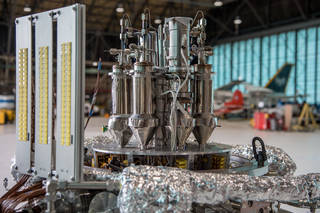Nuclear Power Among The Stars
Nuclear power among the stars
Power generation in space is a very complicated task, actually power itself isn’t the issue but how do we get rid of the waste. Usually for smaller missions batteries, fuel cells or solar panels are enough but for more extensive missions we need more power. The life support systems for more than 4 people and sensory equipment’s require a lot of power and on a high voltage.
A very necessary concept to understand about power generation is that there is not atmosphere. Atmosphere is very important for engines on earth to work as they are not just important for combustion but are also the medium in which the engine dumps its exhaust and its heat. Heat is a big issue in engines as there are very few engines which even reach the thermal efficiency of 50%, this means that most engines are able to convert Less than 50% of the energy stored in its fuel. The rest of the energy is dumped out as heat some of it is released through exhaust gas and the rest through the radiators. For example the thermal efficiency of an petrol engine in a car is about 30% which is turned into power the rest 60% heat is exhausted through the exhaust gas and whatever is left is cooled by the radiators.
As you probably can guess the simplistic ways of releasing heat are not possible in space, the conventional air to water intercooler or radiator won’t work in space. So this is the main problem of power generation in space we can generate as much power as we want we just can’t release it. The primary way of cooling in space is black body radiation radiators which work much differently as compared to air to water radiators, basically when something gets hot it glows at lower temperatures (< 1000° census) the wavelength of radiation is invisible to the human eye but as it gets hotter the light gets into the visible spectrum. This is way metals glow red hot when we heat them. This radiation can be used to dissipate heat in space .We are going to talk more about radiators in space in the future blogs.
The better way to do it is to use a nuclear reactor in space. Reactors can produce a lot of power for not much weight its sustainable and it will probably go super critical and explode if the ship is shot down. There are multiple different types of reactors which can be used in space if we started to talk about them then it would take a week but the gist of it is that we would need a reactor with very high operating temperature.
Why u may ask, two reasons power to weight ratio and thermal efficiency. So first power to weight ratio simply a which runs hotter produces more power for its weight. The second is were the problem arises, the hotter a reactor runs the more we can expand the coolant and more power we can get out of it. As of now we have the technology to extract about 50 to 60% of power produced by a reactor. So it is good right if there is less heat then we can make do with smaller radiators right no, quite the opposite actually.
The is thermal efficiency is dependent upon the heat difference that our coolant went through the more the difference the more the efficiency for example if the coolant was at 1400°C and after the turbine we brought it down to 300°C it would be about 30% efficient but if the coolant was at 2800°C and brought down to 300°C it would be about 51% efficient. So the more heat difference we have the better but radiators don’t work well at lower temperatures.
The black body radiation of an object increases quadratically with temperature so if the double the temperature the energy release is 4 times more. The surface area of the radiator also matters but that’s constant. So we are in a dilemma that if we want to produce less heat we can’t release it easily and if we realise it easily we would have to produce a lot more heat. So that’s why I think why reactors with very high operating temperatures would be used because if we have high starting temp then we can have a high temperature even after it comes out of the turbine and into the radiators.
To conclude this is the main reason why nuclear reactors didn’t make it to space yet but as the satellites and spacecrafts start getting more and more advanced having an nuclear reactor on board is inevitable. We hope to see how the space agencies tackle the problem of thermal efficiency of nuclear reactors in future.




Comments
Post a Comment